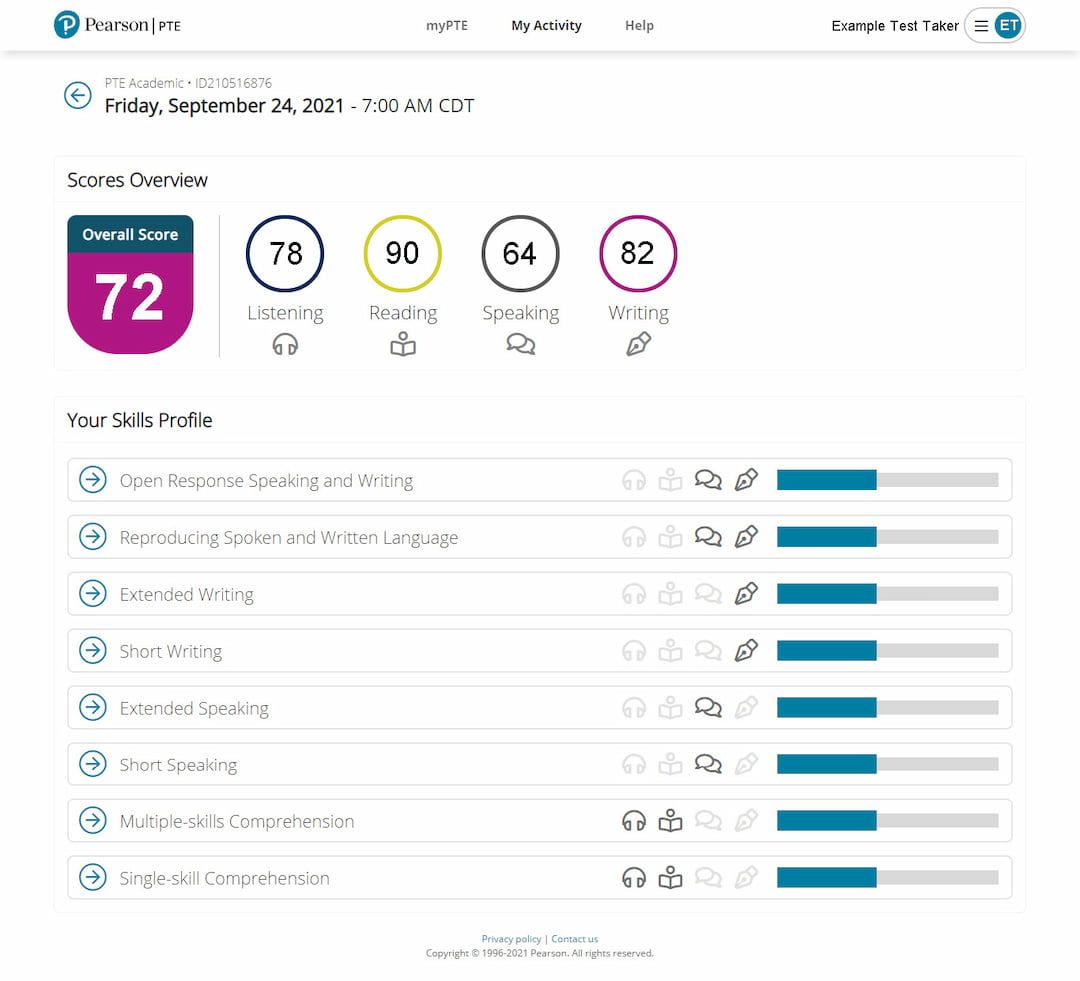Your PTE Skills Profile: What Each Enabling Skill Means
Getting your PTE score report is a big moment, especially if you’re applying to study abroad, for permanent residency, or a work visa. But there’s more to that report than just the overall score.
Your PTE Skills Profile breaks down your performance into 8 PTE enabling skills. These insights go beyond “reading” or “speaking”—they help you understand how you use English in specific situations.
Whether you're aiming to raise your score or simply want to know where you stand, the Skills Profile is your personal roadmap to better results.

Table of Contents:
- How the PTE Score Report is Structured
- What Each PTE Enabling Skill Means
- How to Use Your PTE Skills Profile to Improve
- Conclusion
How the PTE Score Report is Structured
The PTE Academic and PTE Core score report has three major parts:
- Overall Score (10–90 scale): Your total score based on all tasks
- Communicative Skills: Reading, Writing, Listening, and Speaking
- Enabling Skills (Skills Profile): A deeper breakdown into how you perform on more specific language tasks
You can learn more about how scoring works by taking a look at our post: PTE Scoring: How Pearson's AI Calculates Your Results
What Each PTE Enabling Skill Means
Let’s break down the 8 enabling skills you’ll see on your score report:
Open Response Speaking and Writing
Measures your ability to express yourself clearly and originally in your own words. For example, when you are giving opinions, summarizing, or describing images. It's about fluency, coherence, and argument clarity.
Reproducing Spoken and Written Language
Tests how accurately you can repeat or reproduce what you heard or read—like in “Repeat Sentence” or “Dictation” tasks. It shows your memory, focus, and listening-to-writing accuracy.
Extended Writing
Your ability to write longer pieces, like summaries and essays. This skill reflects organization, grammar, vocabulary, and how well you develop your ideas in writing.
Short Writing
Focuses on brief written responses, such as filling in blanks or single-sentence answers. Accuracy, grammar, and vocabulary choice are key here.
Extended Speaking
Evaluates how well you can speak continuously for 30+ seconds in tasks like “Describe Image” or “Retell Lecture.” This skill combines fluency, pronunciation, and content delivery.
Short Speaking
Tests your ability to answer quick prompts, like “Read Aloud” or “Answer Short Question.” This skill emphasizes clear pronunciation and fast thinking.
Multiple-Skills Comprehension
Measures how well you can combine skills, usually listening + reading, to understand information from different sources. Think of tasks that involve note-taking and selecting answers based on what you saw and heard.
Single-Skill Comprehension
Tests your ability to understand information from just one mode—either reading or listening. This shows how well you interpret academic English without the need to speak or write. It evaluates your ability to understand meaning, structure, and details.
How to Use Your PTE Skills Profile to Improve
Your lowest skills should become your practice priorities.
For example:
- Low in Extended Writing? Focus on building structured essay responses.
- Struggling with Reproducing Language? Practice Repeat Sentence and Dictation daily.
- Weak in Multiple-Skills Comprehension? Try mock tests that combine reading and listening.
You can also use Arno’s PTE Vocabulary Builder to improve both speaking and writing accuracy by learning necessary vocabulary for the PTE.
Conclusion
Your PTE Skills Profile is more than a breakdown—it’s a strategy map. It tells you which tasks you're already great at and where you should invest your study time.
By understanding what each enabling skill means and focusing your prep, you’ll be able to make smarter progress toward your goals.